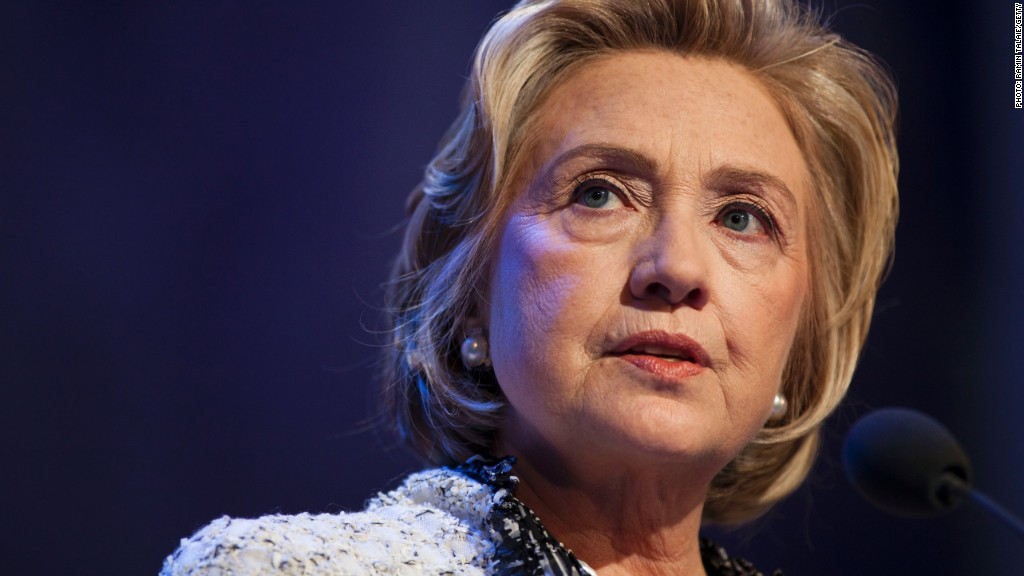
Big ideas that try to solve big problems usually aren't free. And Hillary Clinton's proposal to make college more affordable for everyone is no exception.
The Democratic presidential candidate's campaign estimates that her plan -- which would include "no-loan tuition" at state schools -- would cost about $350 billion over 10 years.
Like many candidates, lawmakers and presidents before her, she is looking to the richest Americans to foot the bill.
"Clinton's New College Compact plan ... will be fully paid for by closing tax loopholes and expenditures for the most fortunate," according to documents from the campaign.
Just how fortunate isn't clear yet, nor is it clear which specific tax breaks and "loopholes" Clinton will target specifically.
But a campaign aide told CNNMoney that the plan to "limit certain high-income tax expenditures ... is a version of a similar plan that President Obama has included in several of his recent budgets."
Related: Hillary Clinton rolls out $350 billion, 10-year college affordability plan
What Obama has proposed repeatedly is to limit the benefit that high-income households get from itemized deductions and certain exclusions (e.g., money that's normally treated as tax free, such as employer contributions to one's health insurance).
In his 2016 budget proposal, for instance, he proposed limiting the value of itemized deductions and exclusions for everyone in the 33%, 36% and 39.6% tax brackets -- in other words, those making more than roughly $200,000 a year ($250,000 if married filing jointly).
Under that proposal, an itemized deduction would reduce the tax bills of high-income households by just 28% of the amount claimed. So someone in the 36% bracket who claims a $100 deduction would only reduce his tax bill by $28, instead of $36 under today's rules.
The Treasury estimated that the president's proposal could bring in more than $600 billion over 10 years. But if certain deductions or exclusions -- such as those for charitable contributions -- are exempted, that would lower the revenue raised.
There are other ways to curb tax breaks on the rich, of course. One that Clinton has said she favors is to tax so-called carried interest as ordinary income. Carried interest is a type of compensation paid to investment fund managers that currently is taxed at the lower capital gains rate of 20%.
While Clinton's solution theoretically could foot the bill for her plan, it would need to pass Congress first. Obama has had no luck.
Another problem is that taxing the rich is the default go-to solution for many expensive proposals from those on the left and the right: deficit reduction, tax reform and expanding middle class tax breaks, to name just a few.
And there still aren't enough rich people around to pay for all of those worthwhile ventures by themselves.

